"People travel to wonder at the height of the mountains, at the huge waves of the seas, at the long course of the rivers, at the vast compass of the ocean, at the circular motion of the stars, and yet they pass by themselves without wondering." St. Augustine
This week our travels have focussed on the very old, the tragic, an outlet village and the very current high life [for some] on the Amalfi coast
. So a mixed bag of delights. Throughout it all, the weather has continued to influence what we do and where we go.
Our refuge from the storm
Our accommodation in Corpo di Cava is quite a switch from the very spacious house in Palermo. Here we have a room with en suite to ourselves and share the rest of the B&B with our host [and any other guests but none as we write this chapter]. That being said, it is very comfortable and cosy. The house is three storeys and the part we occupy started out life as the attic but has since been converted into a comfortable three bedroom apartment. The ground floor of the house dates back to 1100 and the upper storeys were added in the 1800s. Fortunately, our "attic house" has late 20th Century plumbing and wiring. The whole house has been in our landlady's family for a couple of centuries and her brother and her mother live in the lower floors; a very Italian arrangement. The view from our bedroom [which we suspect is actually her bedroom when she doesn't have a couple staying] is quite stunning, looking out over the town of Corpo di Cava to the Apennines on the left and the coastal city of Salerno [and capital of this province] on the right
.
Corpo di Cava is really tucked into the hills and this was not too much of a surprise in daylight. It has an 11th Century Abbazia [Abbey] which was later extended with the addition of a very large Benedictine monastery. Today, the monastery is used as a liceo [boys’ high school]. Corpo di Cava is a medieval village, streets are very, very narrow, paved with cobble stones and if you ignore the newer roofs, modern washing hanging from balconies and the modern window joinery, you could be back 500 years or more. Particularly when the cloud is down and it is raining, a condition we experienced a fair bit this week. The thing that strikes you is generally how quiet things are, presumably because there is very little traffic in town and what there is, is restricted to very low speed because of the cobbles and narrowness of the streets. The other big plus with Corpo is that people appear to clean up after their dogs. Actually, there is a patch of grass and bush at the bottom of the hill which seems to be the dog walking patch and that saves the rest of the town [and your shoes] Well done, Corpo!!! We and our shoes thank you
. :0))
Because of the road works being done on the “wide path” leading up to our accommodation, we had been parking our car in the hotel car park at the bottom of the hill. On the second day here, we walked the back road/”wide path” to our place and felt that it was "do-able" and we could then park the car here at the house. So, on Day 3 here, we came through the back road. This proved to be a real heart stopper because it was the narrowest piece of road we had driven on – mirrors in and because Stuey didn’t strike [poor choice of words] the turn-in angle just right, there was lots of forwards and backwards work to get properly lined up. Then with mirrors folded, we attempted the gap. Now, the auto transmission on the new Peugeot 308 is definitely not its strong point and at low speed conditions requiring small movements, it is diabolical. A smooth gearbox is definitely not a characteristic that comes to mind. [Our opinion is also reinforced slightly in some of their literature]
. That being said we prevailed. However, because this section of the entry was up hill and required slow edging forward, the gearbox got lots of work and must have started to overheat because by the time that we finally parked at our accommodation, it was smelling quite horribly. The next day we decided that walking to the bottom of the hill for the car park was probably the lesser of the two evils so reversed the process. Fortunately, this time we were heading downhill through the gap and were able to line up straight for the gap, letting gravity be the driving force and giving the transmission a holiday. A big sigh of relief once we were outside the town walls and on the open road again. Driving on narrow roads in NZ is going to seem like we are on four lane highways after this experience.
The weather “goes south”
The weather here has definitely shifted into winter mode 0oC a couple of nights this week and we can now see snow on the tops of some of the taller hills around this area
. Sun came out the day that we drove along the coast to Amalfi but the temperature didn’t get above 10oC. Actually as we started to write this chapter last night, we looked outside and it was snowing in Corpo. This morning there was still a light dusting of snow and the forecast for the next week is single digit temperatures [during the day]. So we guess Stuey’s shorts will not be sighted in any photos from here on. [At least until we get back to NZ]
Paestum
About an hour south of Corpo di Cava, are the ancient ruins of Paestum which were settled around the end of the 7th Century BC by Greek colonists. They were subsequently conquered by the Lucani out of what today is Basilicata. However, the Romans then pushed the Lucani out in the 3rd Century BC and renamed the city Paestum. When Hannibal invaded Italy, Paestum remained loyal to Rome and this gained it some special privileges, such as being allowed to mint its own coins.
While the city prospered for a couple of centuries, eventually things started to sour
. Years of deforestation of the surrounding area for boat building and firewood had denuded the area and this coupled with the rising local water table made life somewhat arduous for the locals. They had to keep moving to higher ground and eventually the area became a swamp and haven for malarial mosquitoes. Eventually in the Middle Ages, Paestum was abandoned in favour of the nearby city of Carpaccio.
Paestum became overgrown and apparently "largely forgotten" [although our research was unable to establish how you can forget something as large as the temples we see today]. The city was “rediscovered” in the 18th Century when road builders came across the walls which encircle the old city. What is surprising is that the walls [which are about five kms round] do not appear to have been significantly raided for building materials after it was originally abandoned. Its "re-discovery" occurred about the same time the re-discovery of Pompeii and Herculaneum and this was perhaps one of the main reasons it became protected
. By then also, the water table had lowered significantly, the area had become quite arid and the threat of malaria had receded with it.
Today, the three remaining temples of Paestum - Hera I [the basilica - 540 BC], Hera II [Neptune – 503 BC] and Athena [– 500 BC] - stand proud above the remains of the city. One can walk through the remains of the agora [market place] and imagine what life must have been like here in this bustling metropolis over 2000 years ago. Work is also currently being done on restoring the city wall towers.
Unfortunately, while we were there the weather packed in very quickly and an amazing display of lightning and thunder started up at the base of the nearby hills so we beat a hasty [but prudent] retreat to our car. Pity because we had only been able to walk the exterior of the site before Mother Nature called time. Oh well, perhaps another day.
Outlet Village
Just north of Paestum, we came across Cilento and our first outlet village
. This one is fairly new and a number of names had yet to arrive. However, it gave us a taste of what to expect next week closer to Rome. They have all of the mid-lower top end brands and offer most of the lines at a discounted price. Not quite as good as you might get in sales but still some very reasonable deals. There were over 70 different shops in the complex, including Geox, Puma, Nike, Reebok, Harmont & Blaine, Timberland, Roberta Biagi, Benetton and a bunch of others. The villages that we will visit next week have almost 170 different outlet shops. Enough to satisfy the shopper in one's soul. Fortunately they also include luggage stores; good thing we bought an extra bag ticket on our domestic flight home.
Ercolano [Herculaneum]
The following day we headed in the opposite direction to Ercolano, which, like Pompeii and a number of nearby towns at the time, was destroyed in the 79 AD eruption of Vesuvius. Ercolano is generally less visited than Pompeii, but we think Herculaneum is arguably more interesting
. Surrounded [and largely encased] by solidified volcanic mud and rock, Herculaneum gives you a far clearer idea of the magnitude of the volcanic eruption. While Pompeii’s roofs collapsed under the weight of falling ash, little ash fell on Herculaneum. Instead, it was hit with extremely hot [and noxious] gas blasts then a succession of six flows of boiling mud (a mixture of ash and gases) which then solidified, gradually burying the city from the ground up, and in effect providing support for the buildings. As a result, everyday life in the then Herculaneum is much better preserved than in Pompeii.
It was originally thought that most of the town’s people had escaped the disaster but excavations in 1980 uncovered over 300 bodies in the boat shed shelters on what would have been the then shoreline. It is assumed that they were waiting for boats to rescue them but were overcome by the wave of superheated gases which flowed down the mountain ahead of the flows of volcanic mud
. In Roman times, Herculaneum was on the shoreline; the mud flows pushed that a further 400 metres into the Bay of Naples.
At this point, an explanation from an expert vulcanologist, Mark Davies:
"Pyroclastic flows vary in temperature. You can have cold flows and you can have supercharged exceptionally hot flows. ... If it's cold, you'd suffocate because it's very fluid -the ash gets in your throat and, effectively, you drowned. Or, if they're very, very hot, you become incinerated in the blink of an eye." The skeletons recovered at boat shed area showed signs of thermal shock from temperatures in excess of 500oC.
The very high temperature of the initial flows also had a dramatic effect on the buildings, carbonising the wood - the petrified remains are still visible today. From an archaeological viewpoint, one benefit [if one can find pluses in such a disaster] was that the solidified volcanic flows, up to 25 metres deep in parts, effectively sealed the site until excavations commenced in the 1700s
. Thus Herculaneum has many two-storey buildings and a number of excellent frescoes and mosaics on both walls and floors which have been protected against the elements and the biggest destroyer, Man. Today, about 75% of the site is yet to be uncovered so expect more discoveries in the future, furthering our understanding of how the ancient Romans lived. Unfortunately for those ancient Romans, however, a pretty tough way to provide us with that knowledge, a pleasure they probably would have foregone had they been able to have any say in the matter.
Amalfi Coast
On a previous visit to the area, we had travelled from Sorrento down the coast to Amalfi. So this time, we wanted to close the loop by travelling north up the coast from Corpo di Cava to Amalfi. The road trip was only about 27 kms but it took us over an hour just in driving time alone. The road is extremely narrow but the views are truly magnificent. Fortunately, the sun had come out for the outward leg of the journey so showed us the beauty of the area
. As we rounded the tight curves, we seemed to be continually spotting yet another village high up on the hillside, seemingly without any reason for its particular location. Was there a spring there? Or some other valuable resource? Was the soil richer in that area? Who knows. We suspect the real reason has been lost over time because many of these villages have been there for centuries.
En route to Amalfi, we passed through a number of small coastal towns which while having an agricultural base are clearly aware of the benefits of satisfying the tourist trade. Indeed, many of the restaurants (actually, any food or drink outlet) in this area generally have a "tourist" menu. We had lunch in a restaurant in Amalfi and the menu was in four separate languages (Italian, English, French and German); we have seen up to six languages on the displayed menus outside some restaurants. These are usually the type of place we avoid like the plague; however, in Amalfi, there was no other choice
.
The Amalfi coast road is one of the most beautiful drives ever, albeit not one for the faint-hearted driver or passenger. Notwithstanding the narrowness of these roads, Italians seem to have no aversion to using 50-seater tour buses on them. We can attest to that because that is how we got to Amalfi the first time [a decade ago] and on that occasion, we met another 50-seater behemoth coming in the opposite direction, and on a bend at that. Somehow we all survived without a scratch on either vehicle. 10 years later, nothing has changed except that more buses seem to be making the journey. Fortunately for the intrepid Kiwis, these tour buses virtually all originate from the Naples-Sorrento end of the road so we were only coming across the smaller local buses. As with our trip from Como to Bellagio a couple of months ago [actually, that was three months ago], there was lots of pulling over when the opportunity arose to let the speedsters through. At least, it provided many a photo opportunity in a very photogenic area
.
Life here is tough for the farmers and they have to make the most of their terrain even if it seems to be all sloping downhill at a rather sharp angle on very rocky ground, hence the amount of terracing. Trish commented that these hills made Roseneath look like the Hauraki Plains. Like the stone walls we saw in Sicily and elsewhere, the labour involved in building these terraces could only have been the result of many generations of effort. No wonder people remain wed to their land. The only saving grace would be that they had plenty of raw materials immediately available to build the retaining walls. This time of the year, the terraced farms have their fruit trees covered, presumably to guard against raiding birds. While grapes and other fruit are grown in abundance, lemons are the mainstay here and limoncello and lemon products are everywhere. If shops along the coast, are not selling ceramics, it is limoncello, or the like. Our Corpo di Cava landlady makes the most delightful chocolates with various lemon fillings and on our last night we were treated to a sampling
. They were delicious.
We alluded to the fact that ceramics are very big in this area, and each town along the coast appears to have its own little twist to this particular product. We visited Vietri Sul Mare [Vietri on the Sea], the southern-most of the 14 towns on the Amalfi Coast, on our last day in this area and it seemed that about 50% of the town's shops specialised in ceramics. Most had the very traditional products in yellows and greens but some were clearly trying to break out of the traditional mold (pun unintended) and be a little adventurous, resulting in some fabulous creations. In Amalfi, the vendors virtually had a captive audience, with tourists being bussed in for the day (actually only for part thereof) and most seem to want to go away with a keepsake of their visit. Vietri Sul Mare, however, sees fewer tourists [unless they are Italian] and the competition is much fiercer, with prices half what we had seen the day before in Amalfi
. And of course, all are happy to export so the pressure is on to withstand the sales pitch ... we succeeded in coming away empty handed. Speaking of exports, Vietri Sul Mare has another famous export, one that will be recognizable to the foodies among us - Antonio Carluccio. Apparently, he did one of his "Two Greedy Italians" TV shows here in the town where he was born.
Finally, before stopping at Amalfi, we had driven up to Ravello which is a small town [pop~2500] perched on the top of a spur overlooking the Mediterranean. Ravello has a huge international reputation and is extremely photogenic . There is a tree in the grounds of Villa Rufalo which is probably as photographed as the Lone Cypress on the 17 Mile Drive north of Carmel near Monterey, California. From its position almost 1200 feet above sea level, Ravello has a commanding view of the coast and is a photographer's mecca. However, its main claim to fame is the annual Festival which had its 60th Anniversary this year
. Over the years, it has attracted many great performers, musicians, singers, orchestras, actors, and dancers. Italy seems to do the Festival thing very well. We were in Viterbo last year during the opera festival and one didn't have to buy a ticket to enjoy the performance; like many of the Italian festivals, it was an outdoor event. Most are evening events but just to be different, Ravello runs a sunrise event. The sun will be behind the audience in case you are thinking of taking the plunge in 2014.
That draws our time in southern Campania to a close and we next move further north to Naples. It has been a real education trying to absorb so much history over the past week and Ercolano again reminds us that Mother Nature can spit the dummy big time whenever she pleases and we mere mortals need to get ourselves out of the way pretty quickly or pay the price. If we needed any reminder of that, Etna was providing another ready example this week with ash and small scoria stones falling on its surrounding towns.
Naples promises to challenge our senses [yet again] with its majestic buildings and the hustle and bustle of another major city. Our accommodation there is on the edge of the city so we will probably secure the car for the next few days there and take advantage of the city’s metro system. We will report back.
Ruins, Disasters and Scenic Drives
Tuesday, November 26, 2013
 Corpo Di Cava, Campania, Italy
Corpo Di Cava, Campania, Italy
Other Entries
-
6In and Around Antwerp
Aug 10108 days prior Antwerp, Belgiumphoto_camera21videocam 0comment 0
Antwerp, Belgiumphoto_camera21videocam 0comment 0 -
7Short Stop in Milan
Aug 10108 days prior Milan, Italyphoto_camera22videocam 0comment 2
Milan, Italyphoto_camera22videocam 0comment 2 -
8Our week in the Sudtirol area
Aug 13105 days prior Arco, Italyphoto_camera24videocam 0comment 3
Arco, Italyphoto_camera24videocam 0comment 3 -
9Lakes, Lunches, Ferries and Trains
Aug 2098 days prior Mercallo, Italyphoto_camera30videocam 0comment 4
Mercallo, Italyphoto_camera30videocam 0comment 4 -
10Turin – the power house of Piemonte
Aug 2791 days prior Turin, Italyphoto_camera44videocam 0comment 1
Turin, Italyphoto_camera44videocam 0comment 1 -
11Towers, Mosaics, Fast Cars and Great Cuisine
Sep 0384 days prior Bologna, Italyphoto_camera46videocam 0comment 0
Bologna, Italyphoto_camera46videocam 0comment 0 -
12Return to Tuscany
Sep 1572 days prior Buggiano, Italyphoto_camera34videocam 0comment 1
Buggiano, Italyphoto_camera34videocam 0comment 1 -
13Big Cities, Mountain Drives and Spas
Sep 2067 days prior Buggiano, Italyphoto_camera31videocam 0comment 1
Buggiano, Italyphoto_camera31videocam 0comment 1 -
14Assisi And Other Umbrian Treasures
Sep 2166 days prior Petrignano, Italyphoto_camera54videocam 0comment 2
Petrignano, Italyphoto_camera54videocam 0comment 2 -
15Another Red Zone - and Some Unexpected Delights
Sep 2958 days prior Giulianova, Italyphoto_camera41videocam 0comment 1
Giulianova, Italyphoto_camera41videocam 0comment 1 -
16Mother Nature Flexes Her Muscles
Oct 0651 days prior Castro Marina, Italyphoto_camera38videocam 0comment 3
Castro Marina, Italyphoto_camera38videocam 0comment 3 -
17In the Land of the Trulli
Oct 1047 days prior Ceglie Messapica, Italyphoto_camera40videocam 0comment 0
Ceglie Messapica, Italyphoto_camera40videocam 0comment 0 -
18From the Heel to the Toe...
Oct 1740 days prior Vibo Marina, Italyphoto_camera42videocam 0comment 1
Vibo Marina, Italyphoto_camera42videocam 0comment 1 -
19Going for Baroque
Oct 2928 days prior Modica, Italyphoto_camera41videocam 0comment 1
Modica, Italyphoto_camera41videocam 0comment 1 -
20Baroque and Beyond
Nov 0521 days prior Modica, Italyphoto_camera46videocam 0comment 0
Modica, Italyphoto_camera46videocam 0comment 0 -
21Our Palazzo in Palermo
Nov 1610 days prior Palermo, Italyphoto_camera43videocam 0comment 1
Palermo, Italyphoto_camera43videocam 0comment 1 -
22Sicily Wrapped Up
Nov 215 days prior Corpo di Cava, Italyphoto_camera45videocam 0comment 0
Corpo di Cava, Italyphoto_camera45videocam 0comment 0 -
23Ruins, Disasters and Scenic Drives
Nov 26 Corpo Di Cava, Italyphoto_camera51videocam 0comment 0
Corpo Di Cava, Italyphoto_camera51videocam 0comment 0 -
24Naples – Not a Pickpocket in Sight
Nov 271 day later Ardea, Italyphoto_camera41videocam 0comment 0
Ardea, Italyphoto_camera41videocam 0comment 0 -
25Ruins, Palaces, Potholes and Porchetta
Dec 015 days later Ardea, Italyphoto_camera66videocam 0comment 0
Ardea, Italyphoto_camera66videocam 0comment 0 -
26The best saved for last - the Eternal City
Dec 1014 days later Rome, Italyphoto_camera58videocam 0comment 2
Rome, Italyphoto_camera58videocam 0comment 2 -
27A Cool Reception
Dec 1822 days later Seoul, South Koreaphoto_camera1videocam 0comment 0
Seoul, South Koreaphoto_camera1videocam 0comment 0 -
28Back in Godzone
Dec 2125 days later Auckland, New Zealandphoto_camera1videocam 0comment 0
Auckland, New Zealandphoto_camera1videocam 0comment 0 -
29Journey's End
Dec 2125 days later Wellington, New Zealandphoto_camera8videocam 0comment 0
Wellington, New Zealandphoto_camera8videocam 0comment 0 -
30Annex A - Journey Maps
Dec 2226 days later Wellington, New Zealandphoto_camera5videocam 0comment 0
Wellington, New Zealandphoto_camera5videocam 0comment 0

 Corpo Di Cava, Campania, Italy
Corpo Di Cava, Campania, Italy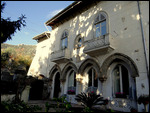
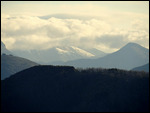



![Herculaneum Uncovered [partly]](http://images2.travelark.org/images/sntj/thumbnail.large.1.1385505349.herculaneum.jpg)

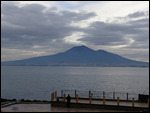
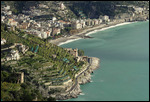

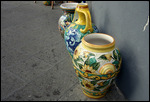
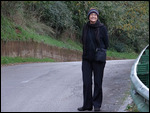
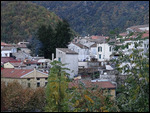
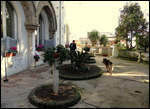
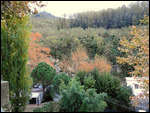
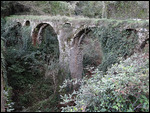
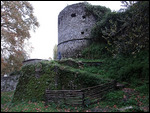





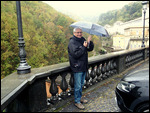
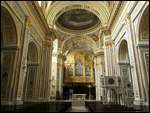
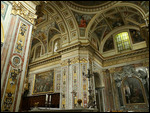
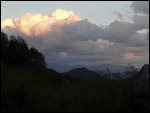








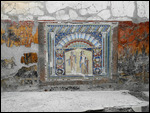
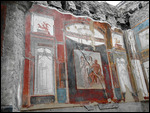

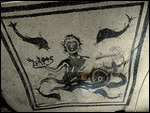
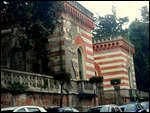
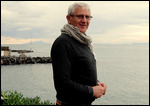
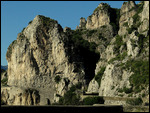
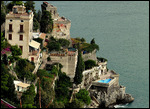

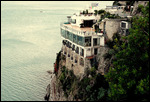


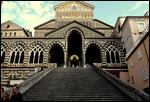
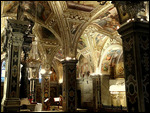


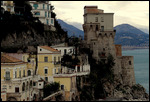
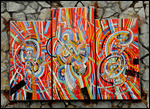


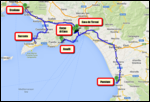
2025-05-23